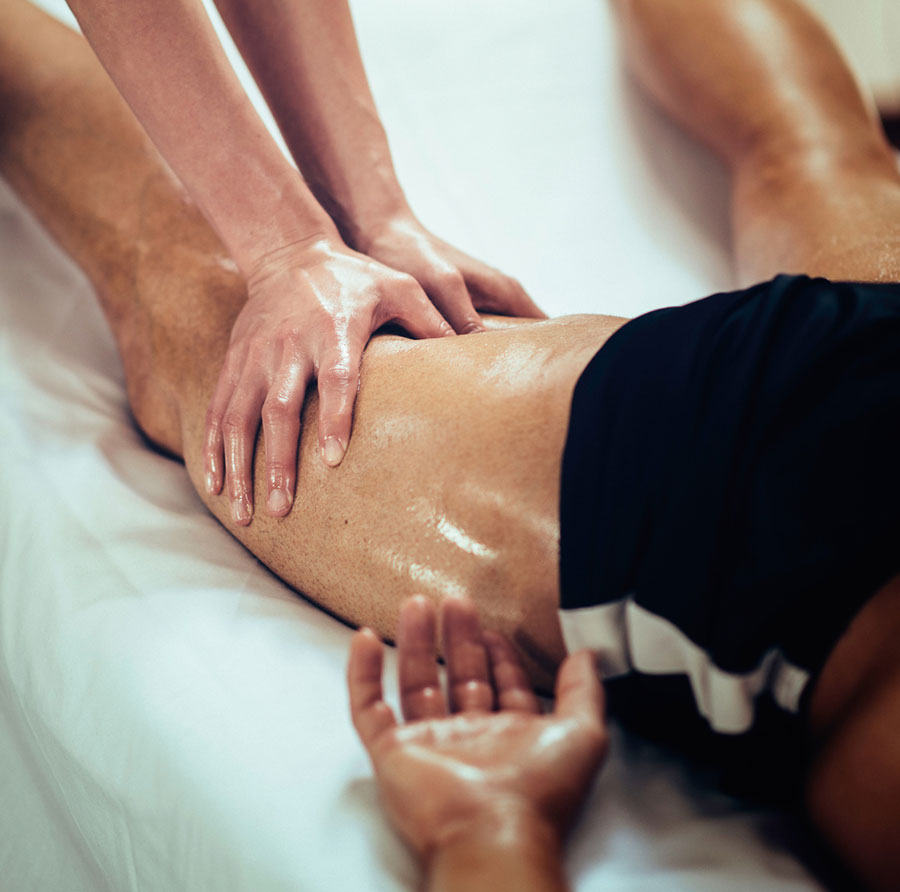Association of Chartered Physiotherapists in Sport and Exercise Medicine blog series @PhysiosinSport
By Vikki Mills @vikki_mills80 and Faith Fisher-Atack BSc @physiofaith
The ACPSEM recently hosted the 2 part soft tissue techniques course, “Current Soft Tissue techniques for Physiotherapists in Sport and Exercise”. This course is an integral part of the ACPSEM pathway which develops clinicians and enables them to progress to Bronze, Silver and Gold levels. It was aimed at practicing clinicians in sports medicine to equip them with the hands on skills necessary for soft tissue management.
 There are many schools of thought emerging in sports and exercise medicine which question the use of “hands on” physiotherapy, specifically massage or soft tissue mobilisation. As physiotherapists working in elite sports settings, the thought of completing a day without utilising “hands on” techniques in some capacity is difficult for us – as Physiotherapists- to imagine. Patients often expect massage as a part of treatment too. In spite of massage being an integral part of our day to day routines, many attendees could not recall having formal massage training. It is also important for clinicians to be able to justify soft tissue work as a valid treatment choice, and feel confident that an evidence base underpins decision making. Thus, the course provided details on current research and how massage fits into a wider treatment plan addressing all components of musculo-skeletal and biomechanical dysfunction.
There are many schools of thought emerging in sports and exercise medicine which question the use of “hands on” physiotherapy, specifically massage or soft tissue mobilisation. As physiotherapists working in elite sports settings, the thought of completing a day without utilising “hands on” techniques in some capacity is difficult for us – as Physiotherapists- to imagine. Patients often expect massage as a part of treatment too. In spite of massage being an integral part of our day to day routines, many attendees could not recall having formal massage training. It is also important for clinicians to be able to justify soft tissue work as a valid treatment choice, and feel confident that an evidence base underpins decision making. Thus, the course provided details on current research and how massage fits into a wider treatment plan addressing all components of musculo-skeletal and biomechanical dysfunction.
Here are some examples of how course attendance has influenced our clinical reasoning and changed our clinical practice.
Evidence base
During the course we explored the evidence base behind sports massage, and discussed the justifications articulated to clients. It became quickly apparent that course attendees were not fully aware of several fundamental reasons for using massage, with most attendees noting blood flow improvement as the main justification. We were exposed to many other reasons, including the positive impact of wellbeing, biomechanical, physiological, neurological and psychological effects (Moraska 2007).
Practical skills
The content of this course was highly practical, allowing us to develop our techniques and gain feedback from both tutors and peers. Evidence has suggested that differences in practitioners’ proficiency affect the effectiveness of massage (Donozama et al 2010). Therefore, handling and optimising patient position was fundamental to the effectiveness of not only the treatment but the wellbeing and comfort of the therapist.
Technical skills gained included a detailed breakdown of individual massage technique during the first course session, with further study and practice of more advanced skills involving tool assisted soft tissue release techniques, cupping and myofascial release in the second course session. Development of massage techniques and application over the entire 4 days addressed specific soft tissue dysfunction, which included muscular imbalances, trigger point development and altered motor patterns.
Lecturers
To host a course for 4 days (the course was held over 2 weekends, 6 weeks apart) to teach fundamental skills to clinicians already practicing in the sporting environment is no easy feat, yet Colin Paterson and Ros Cooke managed to pull this off. Their knowledge, skills and experience in addition to their enthusiasm made for an engaging and enjoyable learning experience.
For any clinician embarking on the ACPSEM CPD pathway it is compulsory that they undertake and evidence post graduate training in massage. This course provides an opportunity for any practicing clinician to challenge their current knowledge and practice. The theory and content challenged thoughts, beliefs and existing skills. We now feel better equipped to justify, articulate and carry out soft tissue techniques as a treatment modality.
Further information on this and other courses which underpin the ACPSEM CPD pathway can be found at https://www.physiosinsport.org/index.php/cpd/cpd-pathway
Vikki Mills BSc (HONS) MCSP HCPC ACPSEM AACP
Vikki has been a charted physiotherapist for 15 years working in both the private and elite sport setting. Vikki divides her clinical practice between Leeds United Academy and community MSK services. Her clinical interests include paediatric lower limb biomechanics and growth related pathology.
@vikki_mills80
Faith Fisher-Atack BSc (HONS) MCSP HCPC ACPSEM ACPAT
Faith is a chartered Human and Veterinary Physiotherapist and clinical director of Equine Physio Services, a physiotherapy practice specialising in equine and rider biomechanics and performance. Former Head of Sports Science and Medicine at Leeds United Academy.
@physiofaith
References
Donozama N, Shibasaki M (2010) Differences in practitioners’ proficiency affect the effectiveness of massage therapy on physical and psychological states.
Journal of bodywork and movement therapists. Volume 14 issue 3 July 2010 pages 238-245
Moraska A (2007) Therapist education impacts the massage effect on post-race muscle recovery. Medicine and science in sport and exercise